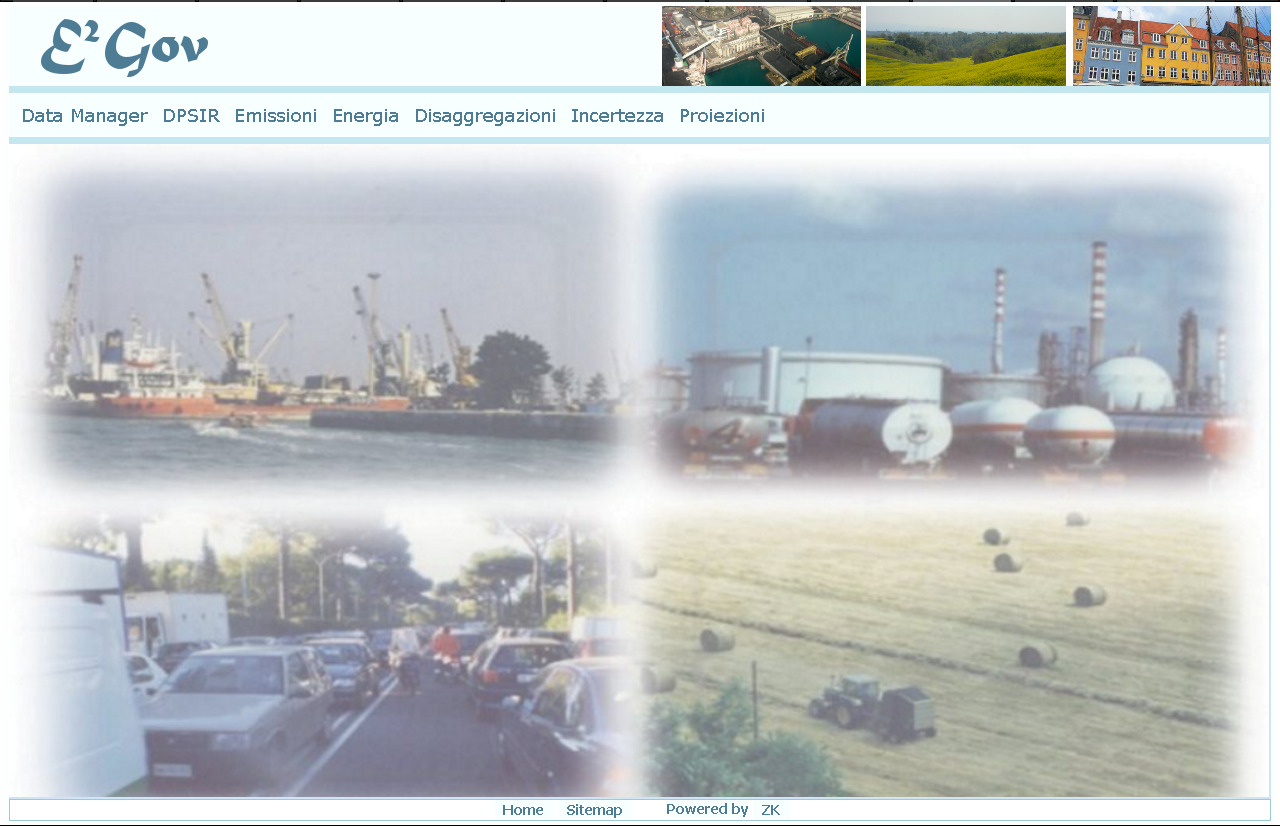E2Gov - Environment and energy governance system
 E2Gov (Energy & Environmental Governance) is the basic tool for the Governance of Environment and Energy which contains the models for the realization of the emission (Emissions) inventory and energy balance. (Energy).
E2Gov (Energy & Environmental Governance) is the basic tool for the Governance of Environment and Energy which contains the models for the realization of the emission (Emissions) inventory and energy balance. (Energy).The system originally was born (1997) as a system for managing air pollutants emissions inventory (APEX) and subsequently developed expanding the inventory to other environmental sectors (water and waste). Then, starting from the observation that the base information for the realization of emission inventories is also functional to the evaluation of pressure on other environmental media, the system evolves into a system for managing the pressures and more recently as a system for energy and environmental governance (APEX.com).
- Data representation according to the DPSIR (Determinants-Pressures-State-Impact-Responses) European Environment Agency
- Establishment of indicators to support the Report on State of the Environment
- Making inventories of air pollutants emissions, water and soil, land registers and sources of noise and electromagnetic radiation
- Realization of energy balance
- Energy and environmental assessments in specific sectors (transportation, vegetation, farming).
The system is applicable for different years and at different spatial scales (national, regional, provincial, municipal) and allows the aggregation and disaggregation of data between different levels.
In particular, E2Gov contains the following components:
- Data Manager manages the data for the governance of environmental and energy
- DPSIR model for the development of indicators according to the DPSIR framework
- Emissions model for assessing emissions of air pollutants, water and soil and assessment of noise and electromagnetic radiation
- Energy model for assessing the energy balance
- Disaggregations model for the spatial disaggregation (lattice or other geometric structures) and time (monthly, daily and hourly) of the data, emissions and energy balance variables
- Uncertainty model for assessing the uncertainty of data
- Projections model for the projection of basic data, emissions and energy variables
- Reporting for the production of reports and thematic maps data
-
The following plug-ins to the system are also available:
- Road integrates E2Gov the model E2Road to assess the driving forces of energy consumption and emissions from road transport
- Airport integrates in E2Gov the model E2Airport to assess the driving forces of energy consumption and emissions from airports, airlines and shipping lines
- Port integrates in E2Gov the model E2Port for the evaluation of driving forces of energy consumption and emissions from ports and shipping lines
- Fire integrates in E2Gov a model for assessing emissions from forest fires
- Forest integrates in E2Gov a model for assessing emissions from vegetation
- Landfill integrates in E2Gov a model for assessing emissions from landfills
- Speciation integrates in E2Gov a model for the speciation of air water and soil pollutants emissions




